The Real Reasons Your Cat Sleeps With You (And What It All Means)
If you’re a cat owner, you probably know the feeling. It’s that gentle thud on the mattress in the middle of the night, followed by the soft padding of paws and finally, the comforting weight settling on your legs, your back, or even your chest. It’s one of those universal cat-person experiences. And it always makes you wonder, with a mix of sleepy affection, “Why do they do this?”
In this article
- Why Your Bed is Prime Real Estate: Warmth, Safety, and Scent
- What Their Sleeping Position Is Telling You
- But What If They Suddenly Change Their Habits?
- How to Make Co-Sleeping Work for Everyone
- Solving Common Nighttime Annoyances
- Heads Up: When Co-Sleeping Is a Bad Idea
- It’s a Shared Decision, After All
- Galerie d’inspiration
Well, I can tell you it’s not just for a random cuddle. After years of working with feline behavior, from frantic shelter life to in-home consultations, co-sleeping is one of the top things people ask me about. The answer is fascinating because it’s woven deep into their instincts for survival, safety, and the unique way they see us as part of their family. It’s not some mystical secret; it’s just practical cat science.
So let’s get into it. We’ll look at the real drivers behind this behavior, what their different sleeping positions are telling you, and how to make sure everyone—you and your purring companion—gets a good night’s sleep.
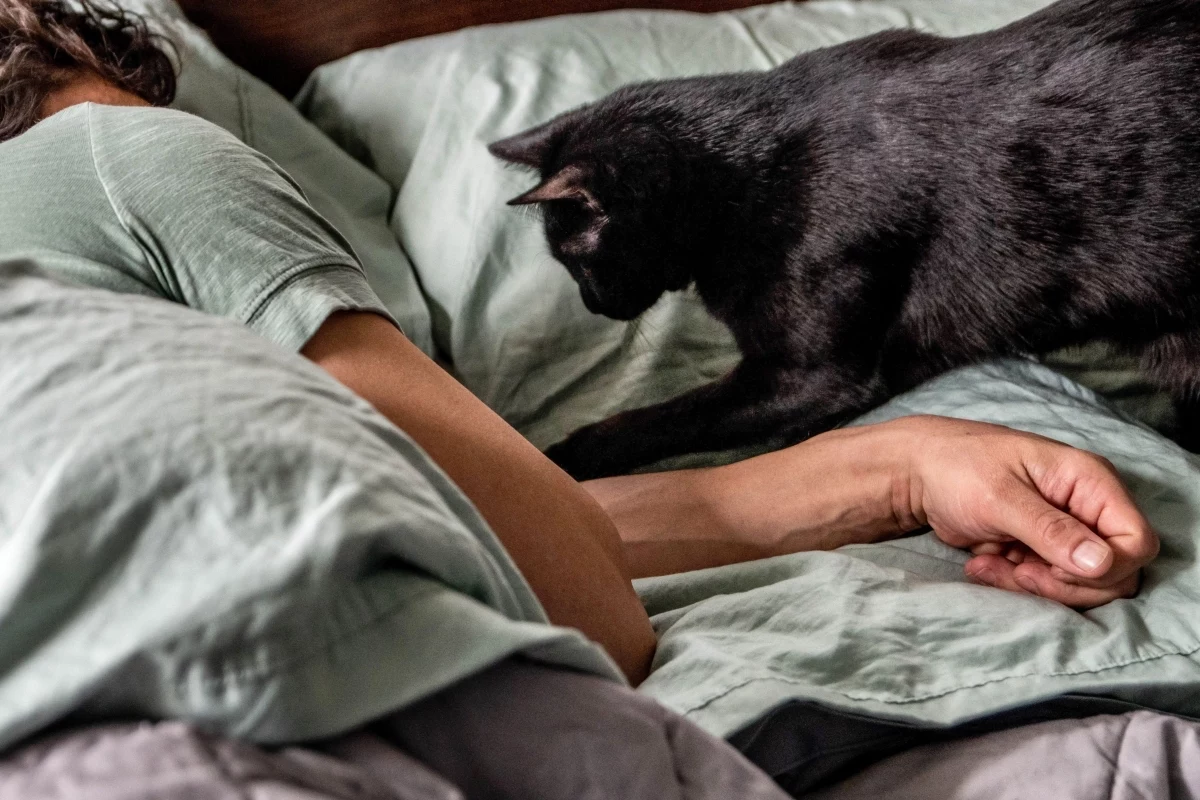
Why Your Bed is Prime Real Estate: Warmth, Safety, and Scent
Cats are nothing if not practical. Their choice to sleep with you is a very deliberate decision based on a few fundamental needs that have been around since their wild ancestors were roaming the earth.
1. You’re a Living, Breathing Radiator
Honestly, the biggest reason is just simple physics. A cat’s body temperature is naturally higher than ours, usually hovering between 100.5 and 102.5°F. It takes a lot of energy to maintain that heat, and by snuggling up to you, they can outsource the job. You’re basically their personal, pre-warmed, king-sized heating pad.
This is pure survival instinct. Out in the wild, cats often huddle together for warmth. In your home, you’re the warmest and most reliable heat source around. You’ve probably noticed this yourself—on chilly nights, your cat is glued to your side, but in the summer, they might prefer a cool tile floor. That’s just smart energy conservation in action.
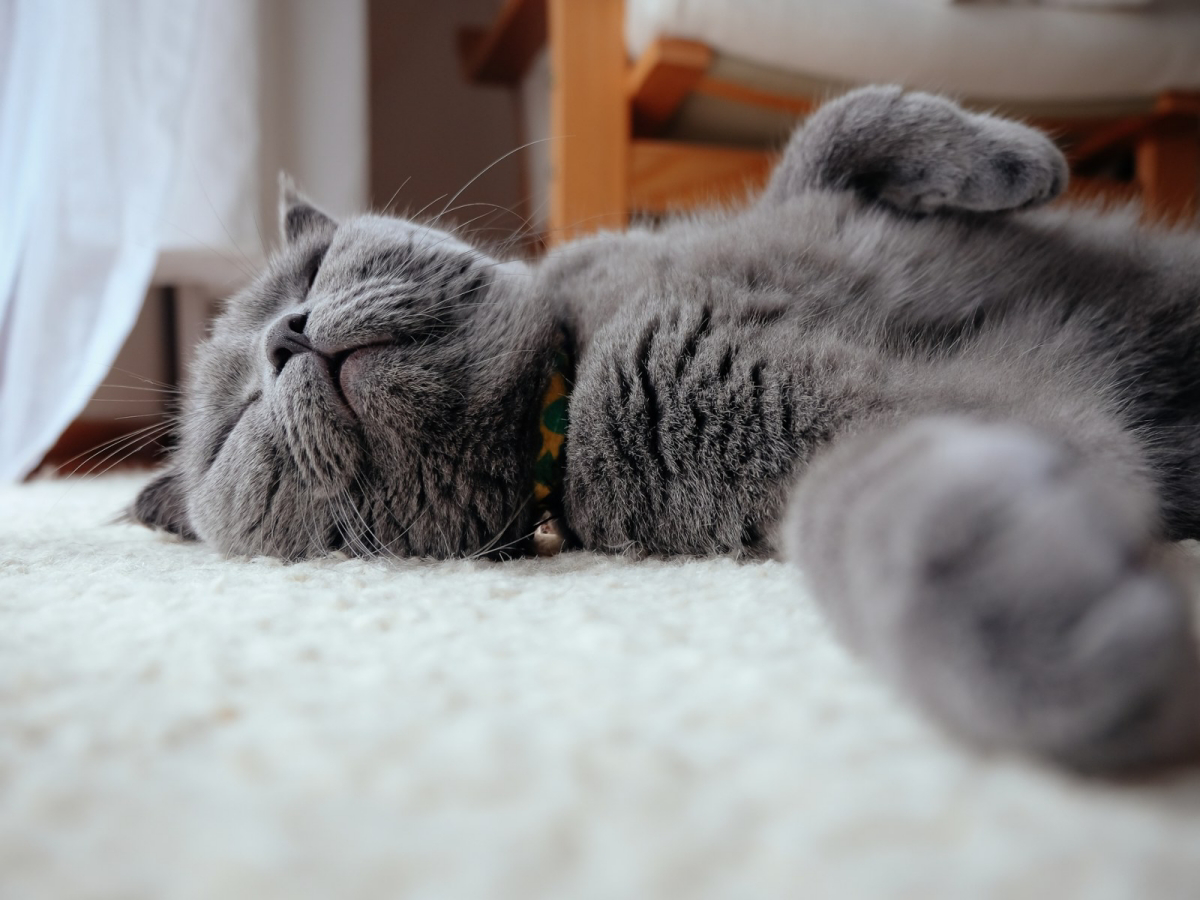
2. You’re Their Bodyguard
In the animal world, sleep is a time of major vulnerability. Cats are in a tricky spot—they’re skilled hunters, but they’re also prey for larger animals. So, when they choose a place to sleep, their instincts scream for security. By choosing to sleep on or near you, your cat is giving you a massive vote of confidence.
In their mind, you are a large, capable protector who can handle any threats. The steady sound of your breathing and your heartbeat is incredibly soothing to them. I once worked with a super-anxious rescue who spent her first month hiding. The breakthrough came the night she finally, tentatively, hopped on the bed and settled at my feet. It was a clear signal that she was starting to see me as a source of safety, not fear.
Scent is a cat’s primary language. They have scent glands all over their face and paws, and when they rub against you or knead your blankets, they’re leaving their scent behind. This isn’t just an “I love you”; it’s a critical social behavior. By mixing their scent with yours, they’re creating a shared “family scent.”
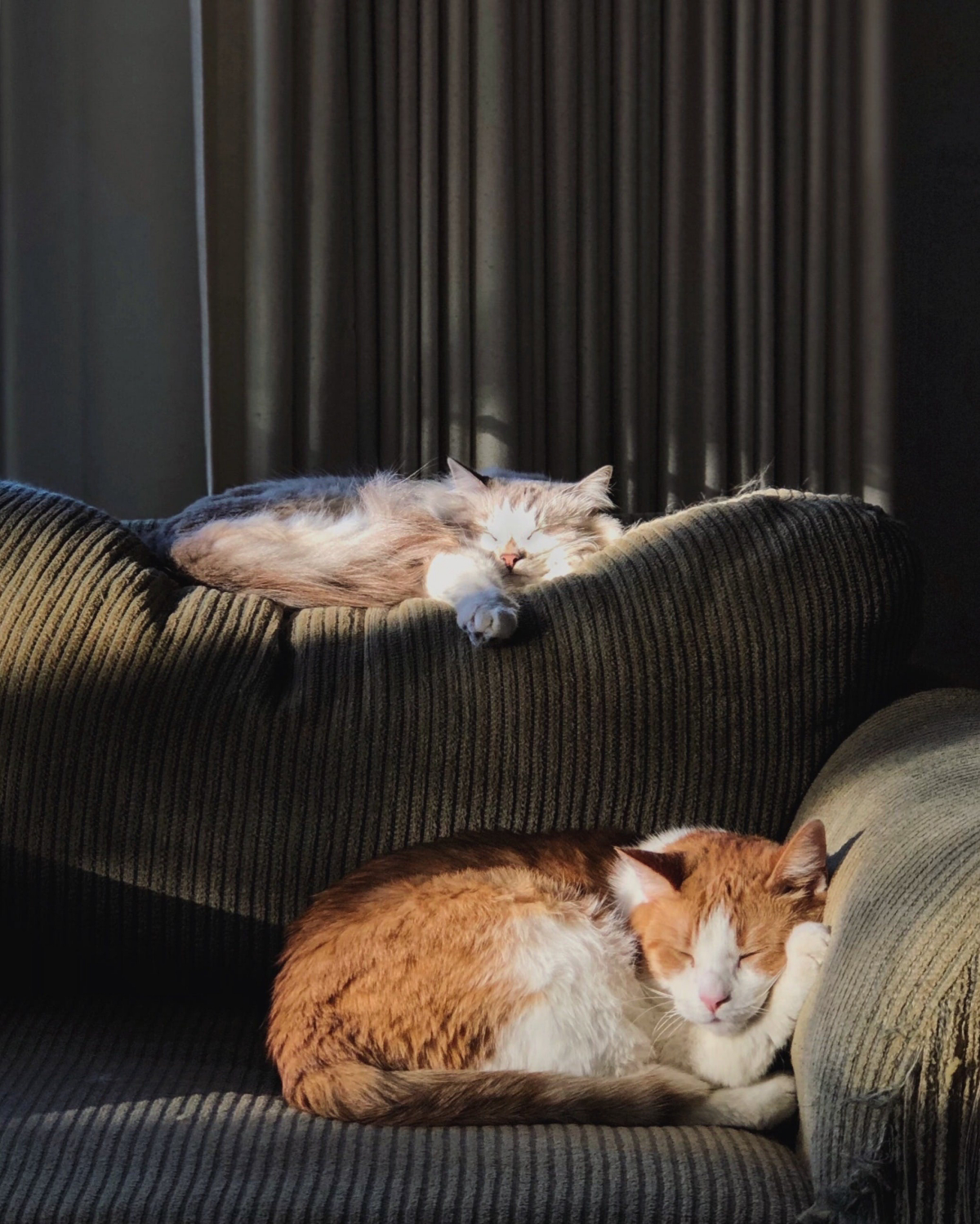
This communal scent is incredibly reassuring. It turns your bed from your space into our territory. It solidifies you as a member of their trusted inner circle. It’s the same reason they rub all over your legs when you come home—they’re covering up the strange smells of the outside world and re-marking you as their own. Sleeping together is just an all-night session of reinforcing that bond.
What Their Sleeping Position Is Telling You
A cat’s posture can reveal a lot about how they’re feeling. While every cat has its own little quirks, watching how they sleep gives you a direct insight into their level of trust and relaxation.
- The Curled-Up Crescent: This is the classic cat-in-a-ball pose. It’s a fantastic position for conserving body heat and protecting their vital organs. While it’s a defensive posture by nature, a cat sleeping like this is often in a very deep, secure sleep.
- The Loaf: You know this one—all four paws are tucked neatly underneath their body, making them look like a loaf of bread. This is a state of relaxed alertness. They’re resting but can spring into action in a split second if needed. If they’re loafing on your bed, it means they feel chill but are still casually monitoring things.
- The Full Belly-Up: A cat sleeping on its back with its belly completely exposed is showing the absolute highest level of trust. The stomach is their most vulnerable area. Exposing it means they feel 100% safe and have zero fear of being attacked. It’s a beautiful compliment to the safe home you’ve provided.
Oh, and a crucial piece of advice here. Think of the exposed belly as a declaration of trust, NOT an invitation. It’s like a friend telling you their deepest secret. The right response is to appreciate it quietly, not to suddenly poke them in the ribs! For most cats, a hand on the belly is a violation of that trust, and they might react defensively. Appreciate the gesture from a distance.

But What If They Suddenly Change Their Habits?
This is a question I get all the time. “My cat always slept with me, but now he doesn’t. What did I do wrong?” Or the opposite! It can be worrying, but there’s usually a logical reason.
If your cat suddenly stops sleeping with you, think about two things: comfort and health. As cats get older, arthritis can make jumping painful. That leap onto the bed might just be too much for them. You could try adding a set of pet stairs. Good ones range from about $30 for simple plastic models to $70+ for nicer, carpeted versions you can find online or at major pet stores. A new pet, a new partner, or even a new noisy appliance near the bedroom could also make them feel less secure.
If your cat suddenly starts sleeping with you, it could be a sign that they’re feeling a bit insecure and are seeking extra reassurance. It could also be that they’re not feeling well and instinctively want to be close to their protector. Any sudden, unexplained change in behavior is worth a call to the vet, just to be safe.
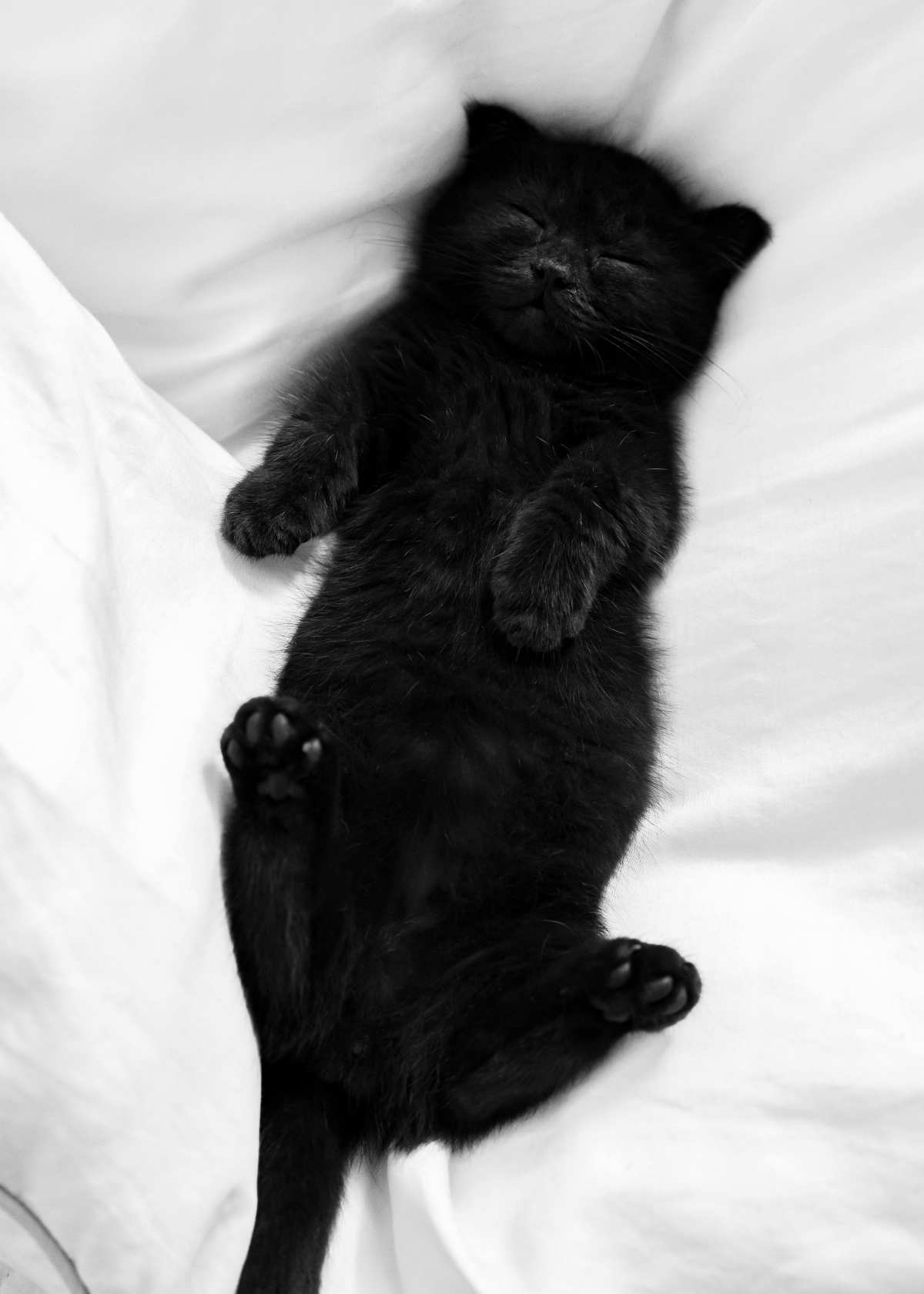
How to Make Co-Sleeping Work for Everyone
Having a cat in your bed is lovely, but not if it means you’re not sleeping. Here’s how to set some ground rules so the experience stays positive.
Set Up a “Designated Cat Zone”
You don’t have to give up your whole bed. You can absolutely teach your cat to sleep in a specific spot, like at the foot of the bed. Here’s a quick way to do it:
- Place an extra-soft blanket (fleece or sherpa works wonders) where you want them to sleep. For a five-star experience, you can tuck a low-wattage heated pet pad in there, which will cost you about $20-$40. Quick tip: Make sure you get one with an auto-shutoff timer for safety.
- When your cat jumps on the bed, use a high-value treat to lure them over to their special blanket.
- Give them lots of praise and the treat only when all four paws are on their designated spot. Be consistent! It might take a week or two, but they’ll get the hint.

Keep Things Clean
Let’s be real, sharing your bed means sharing it with everything on their fur and paws. Regular brushing helps a ton with shedding and dander. I also recommend keeping a dedicated “cat blanket” in their spot and tossing it in the wash weekly. It’s way easier than washing your entire comforter all the time. And a pro tip: use unscented laundry detergent for your bedding. A cat’s sense of smell is incredibly powerful, and strong floral or chemical scents can be really off-putting to them.
Solving Common Nighttime Annoyances
Co-sleeping isn’t always peaceful. Let’s troubleshoot some of the most common issues.
- The 3 AM Zoomies: Cats are most active at dawn and dusk, not in the middle of the night. If they’re waking you up to play, they’re probably bored. The fix? A solid pre-bedtime routine. About an hour before you go to sleep, engage them in a 15-minute “hunt” with a wand toy. Let them catch it at the end, then feed them their last meal of the day. This hunt-eat-groom-sleep sequence mimics their natural rhythm and encourages them to sleep when you do.
- Painful Kneading (aka “Making Biscuits”): Kneading is a sign of a happy, content cat, but those claws can be sharp. A common mistake is to punish them for it, which just confuses them and damages your bond. Instead, keep a thick, plush blanket nearby and gently move their paws onto it when they start kneading on you. Also, regular nail trims are a game-changer. You can get a good pair of cat nail clippers (guillotine or scissor style) for about $10, and it’s always smart to have some styptic powder on hand just in case you snip a little too close.
- The Bed Hog: Some cats sprawl out like they own the place. When your cat creeps into your space, just gently and consistently move them back to their spot. It might feel like you’re doing it a hundred times a night at first, but they will eventually learn the boundaries.
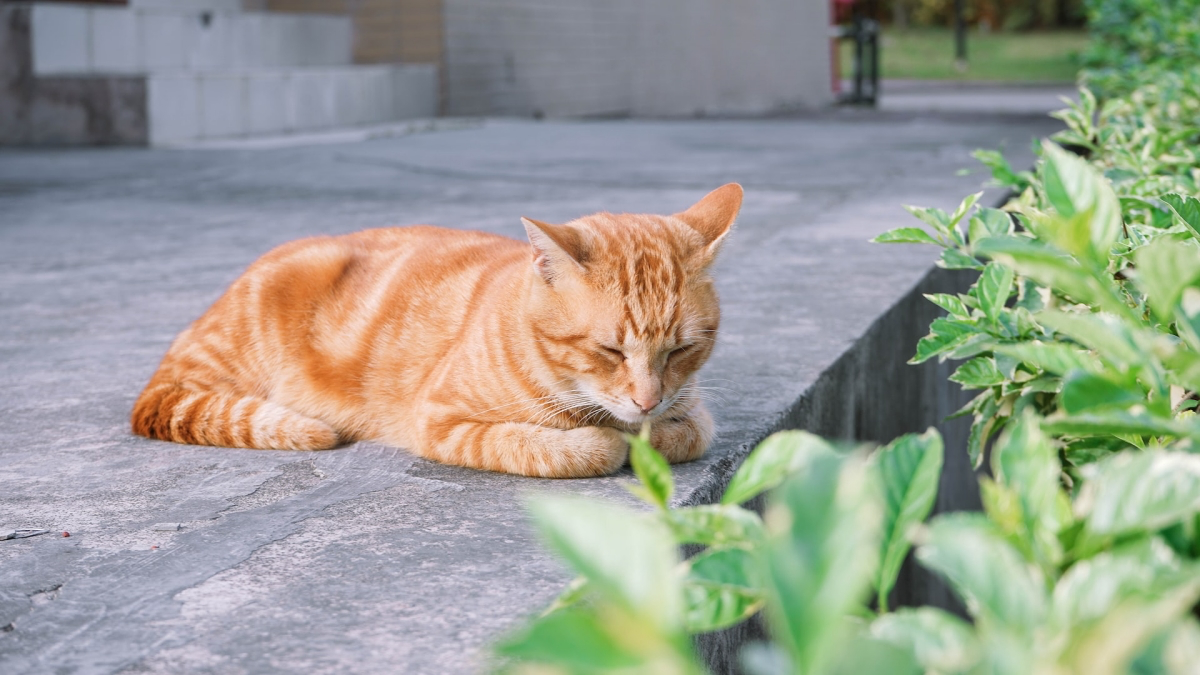
Heads Up: When Co-Sleeping Is a Bad Idea
As much as I love a good cat cuddle, I have to be frank: co-sleeping isn’t right for every household. Safety has to come first.
This is non-negotiable: cats should never share a bed or crib with an infant or a small child. The risk of accidental suffocation, while small, is real and not worth taking. It’s also generally not recommended if you or a partner have severe cat allergies, asthma, or are immunocompromised. Even with perfect cleaning, dander will be in your sheets, and for some people, the health risks are just too high.
Finally, if your cat is dealing with a behavioral issue like peeing outside the litter box or has something contagious like fleas or ringworm, the bedroom should be off-limits until the issue is fully resolved with your vet’s help.
Ultimately, choosing to share your bed with your cat is a personal decision. It’s a practice built on warmth, trust, and a really special bond. That quiet, rhythmic purr next to you in the dark is one of the true joys of having a cat in your life.
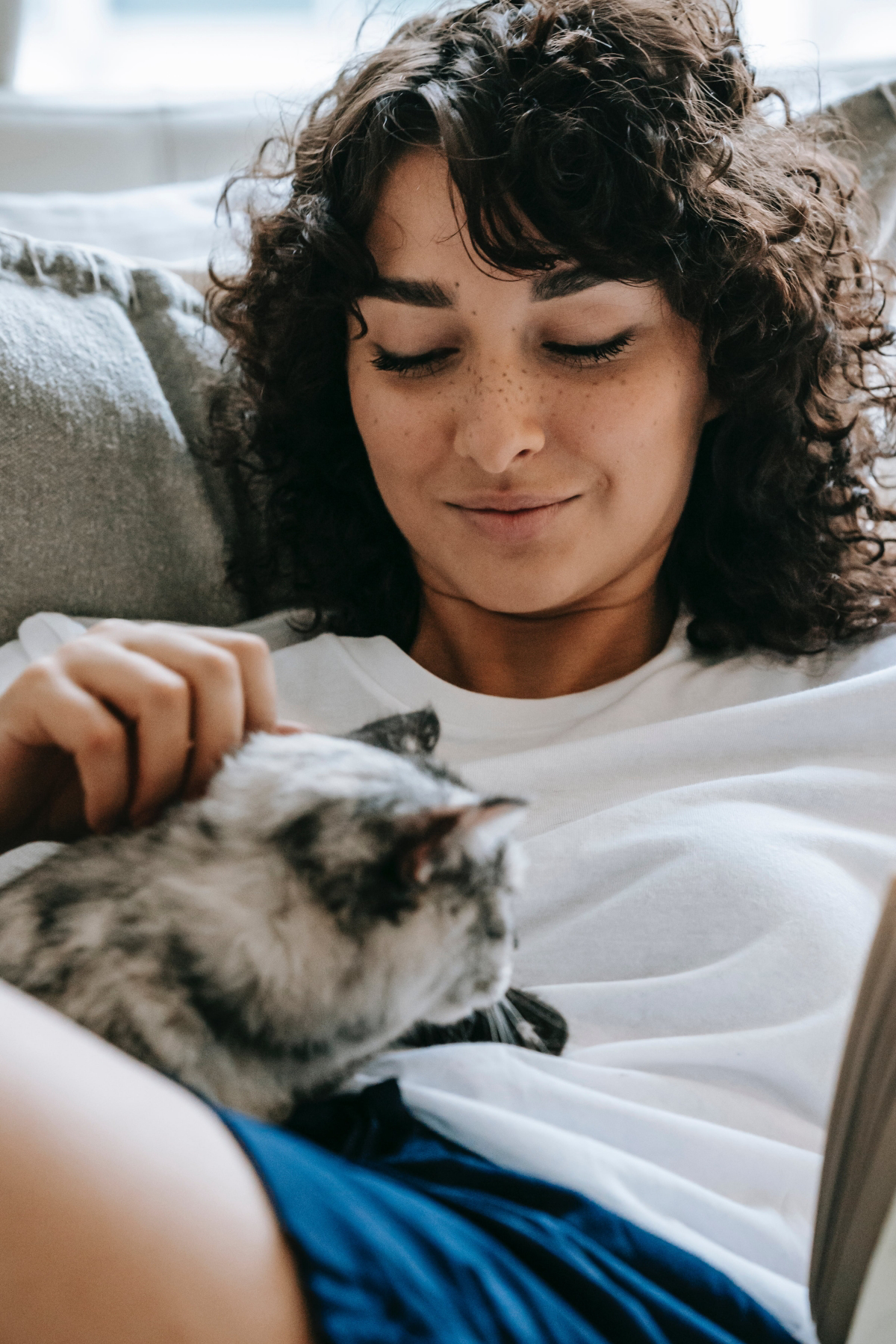
By understanding their instincts, setting a few gentle boundaries, and troubleshooting problems with patience, you can make it a wonderful and safe experience for everyone involved. It’s a symbol of the peaceful, trusting little world you’ve built together.
Galerie d’inspiration
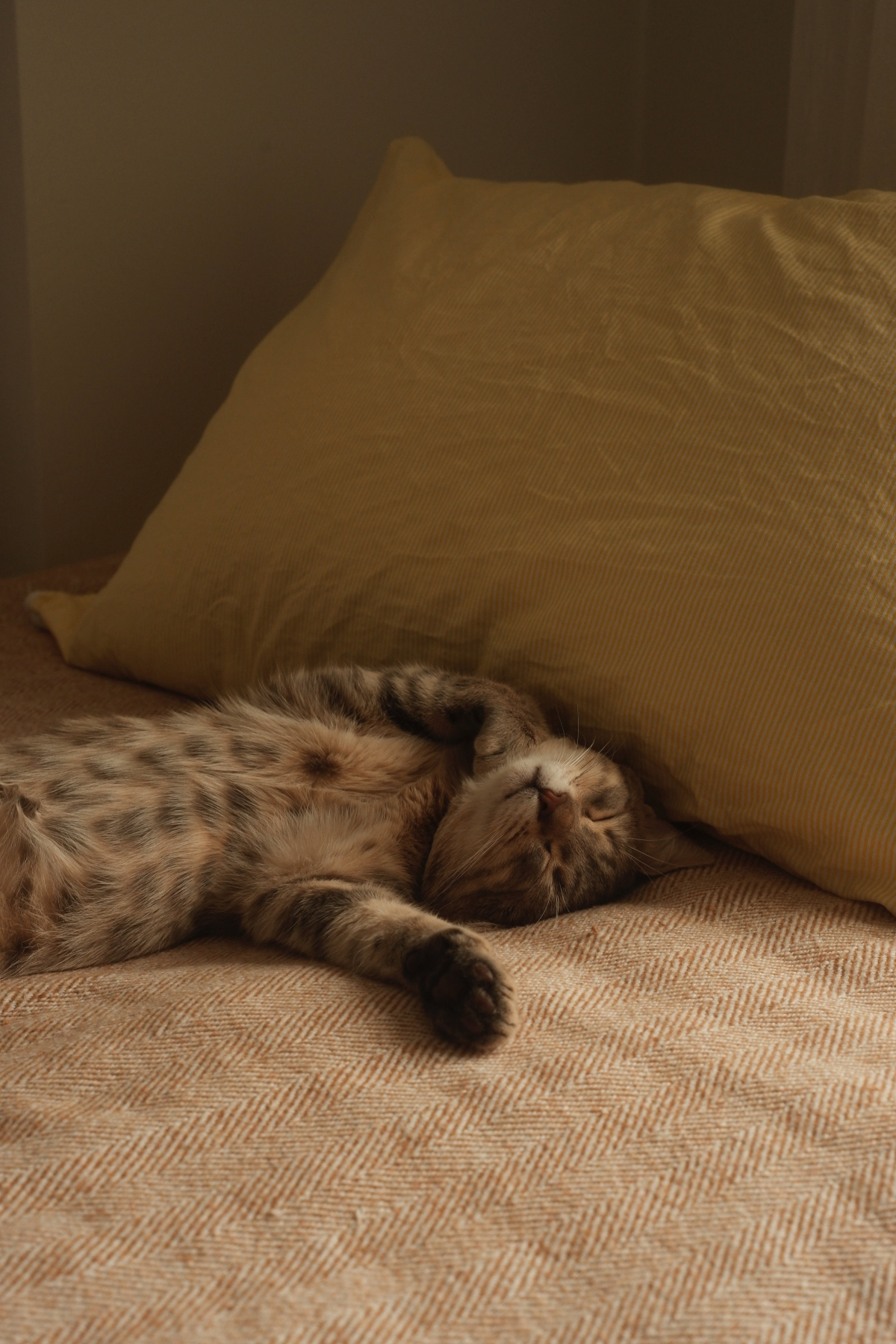
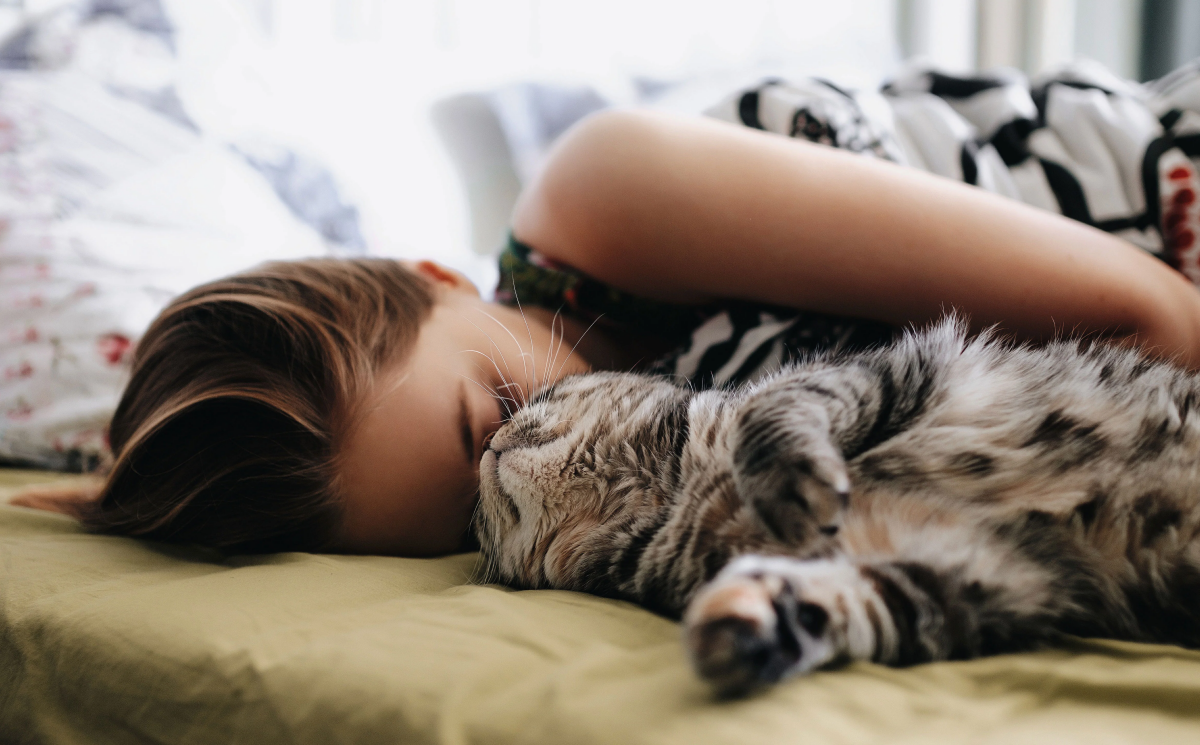
That deep, rhythmic purr you feel when your cat settles on your chest isn’t just a sign of contentment—it’s a form of therapy. The low-frequency vibrations (between 25 and 150 Hz) are medically associated with stress reduction, lowered blood pressure, and even promoting bone density. It’s a moment of mutual healing, powered by instinct.
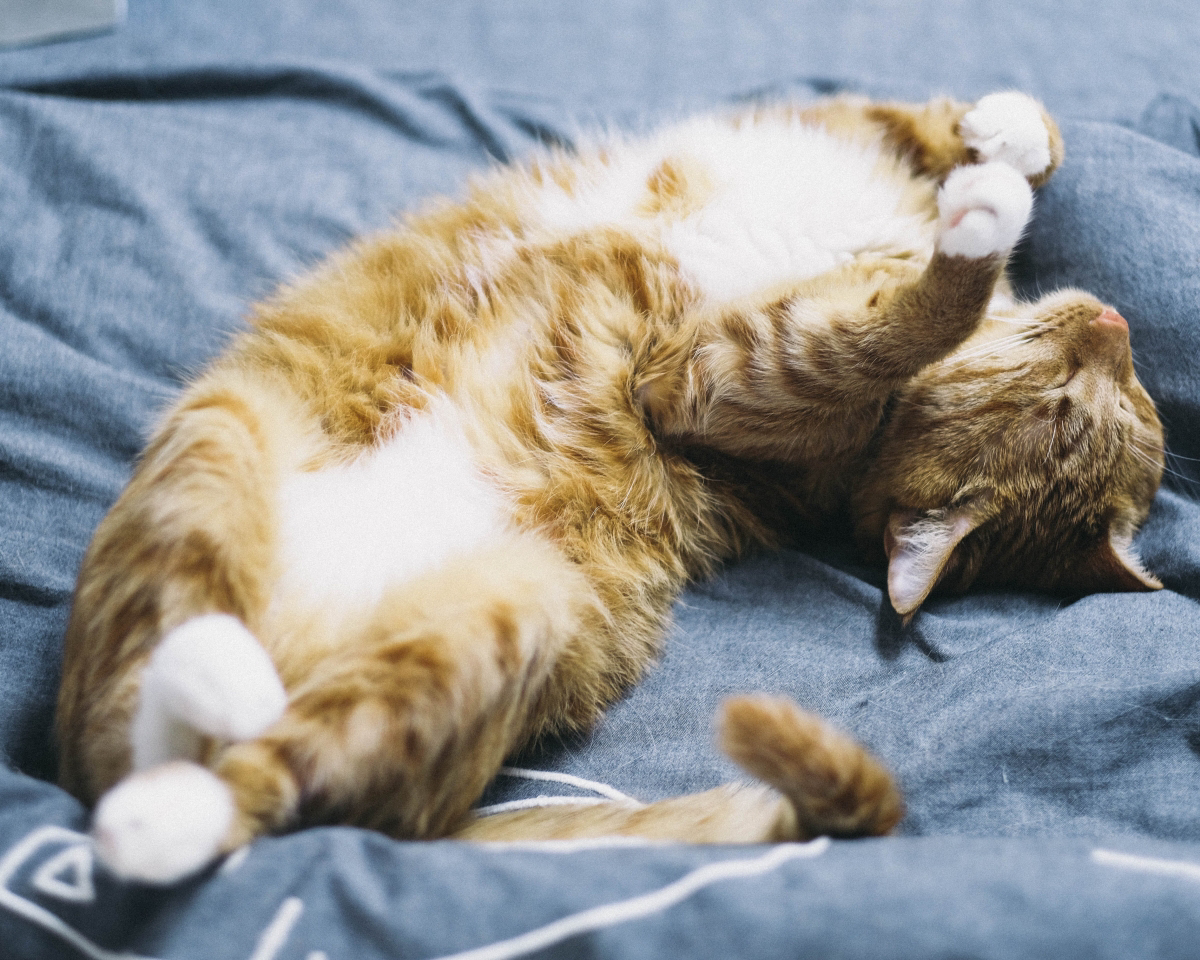
A 2021 study on human-animal co-sleeping found that many pet owners report a greater sense of security and reduced anxiety when sharing their bed with a companion animal.
This feeling isn’t one-sided. For your cat, sleeping with you provides profound security. By choosing you, they are demonstrating the ultimate trust, placing their safety in your hands during their most vulnerable state.
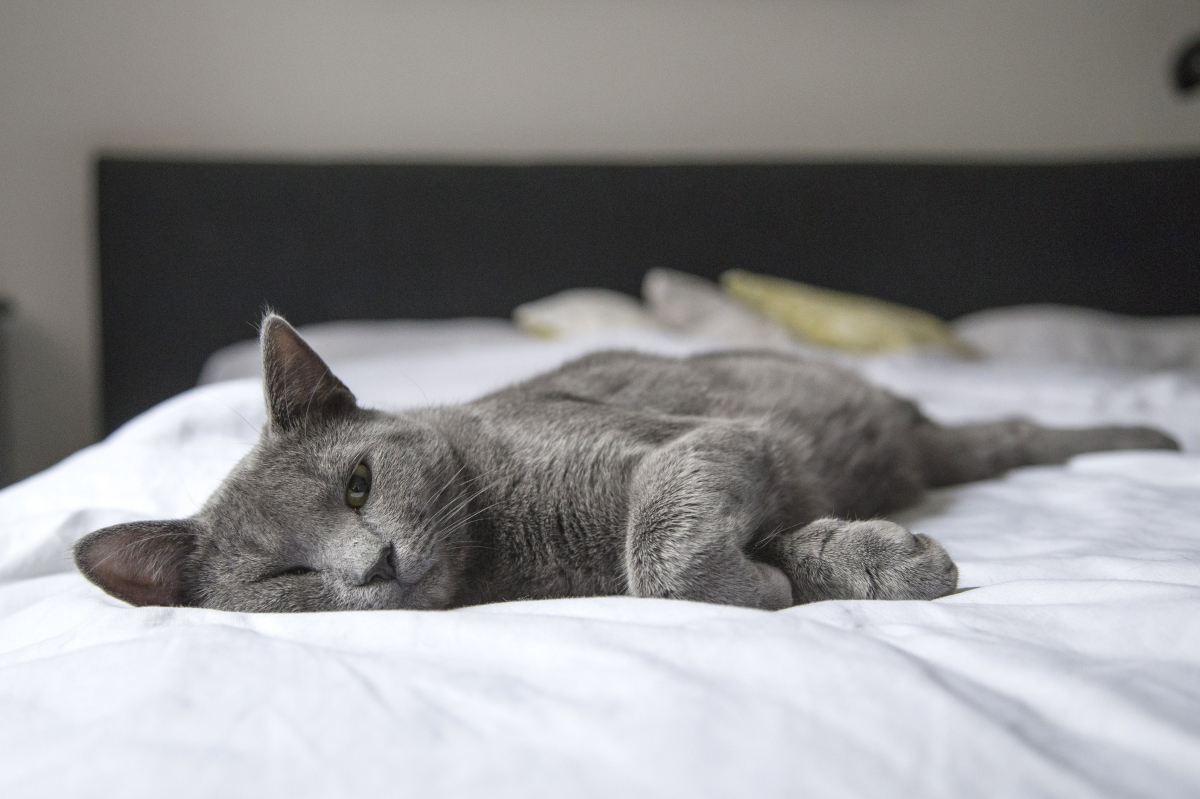
Does my cat’s sleeping position on me mean anything specific?
Absolutely. A cat curled in a tight ball on your legs is conserving heat and feeling secure. A cat sprawled out on its back, belly exposed, is showing immense trust and feels completely relaxed in your presence. If they sleep near your head, it’s often for your warmth and the rhythmic sound of your breathing, which they find soothing.
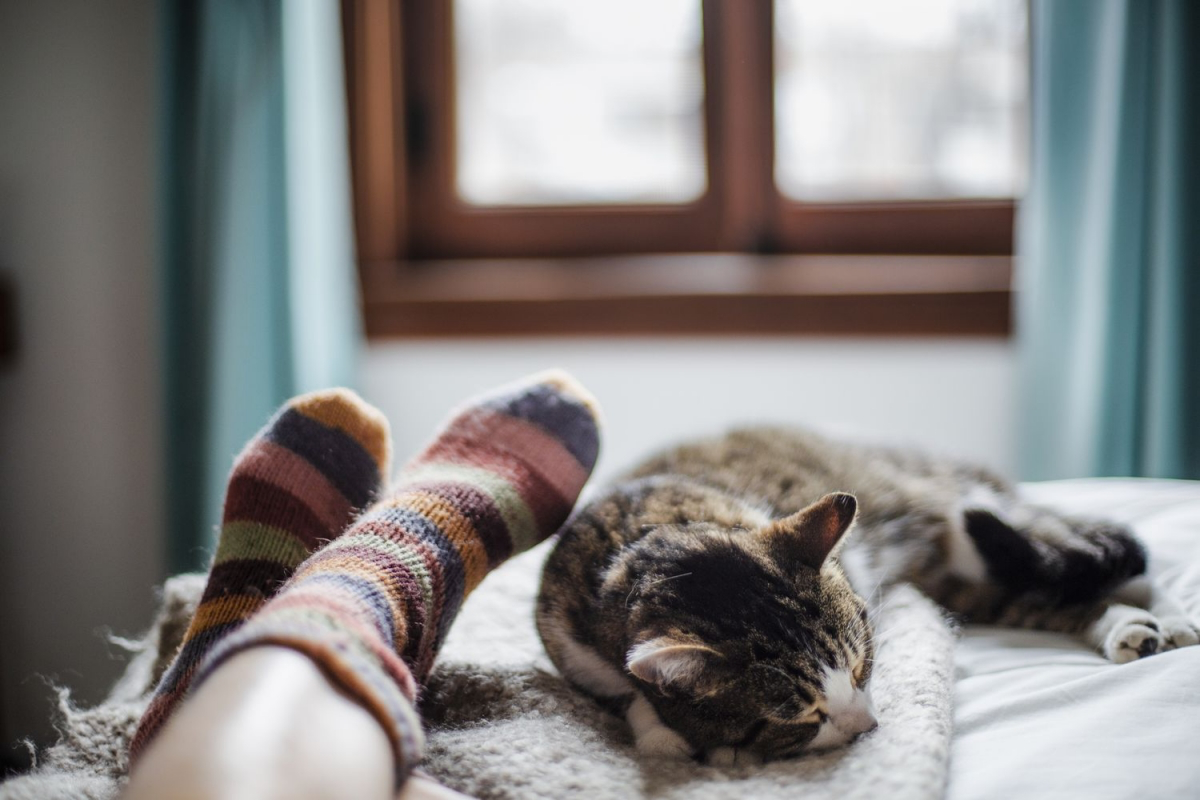
- Establish a clear ‘bedtime’ routine that your cat can recognize.
- Invest in a large, easily washable comforter to protect your bedding.
- If your cat is a ‘kneader’, place a dedicated soft fleece blanket, like a Bedsure throw, on the spot where they usually settle to protect your skin.
The goal? A sleep sanctuary for both of you, not a nightly wrestling match.
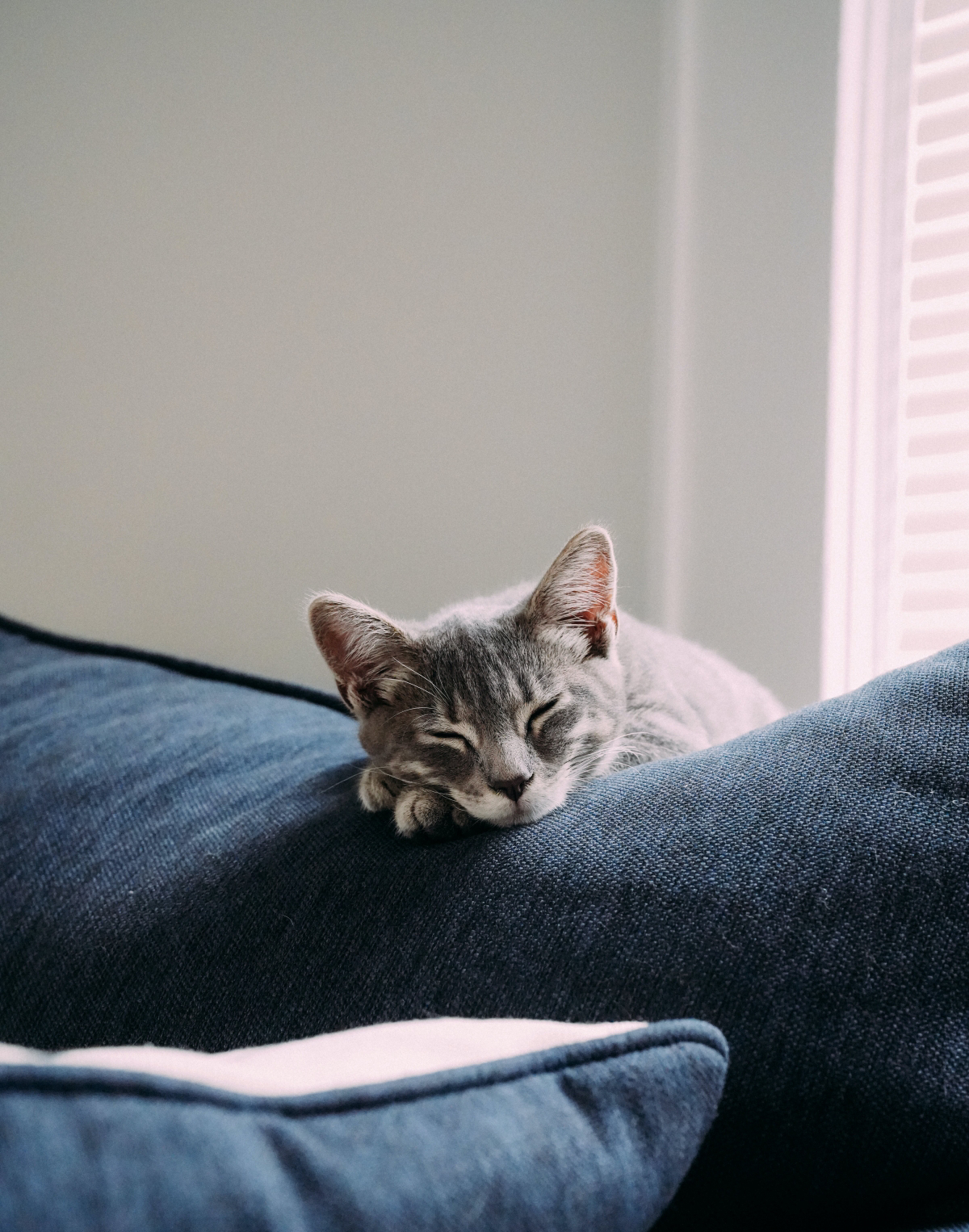
Your scent is a powerful comfort tool. Your cat isn’t just seeking warmth; they are immersing themselves in a comforting bubble of your unique smell. This is why they may gravitate towards your pillow or a worn t-shirt. This ‘scent-soaking’ reinforces the social bond, marking you as a safe and integral part of their territory and family unit.
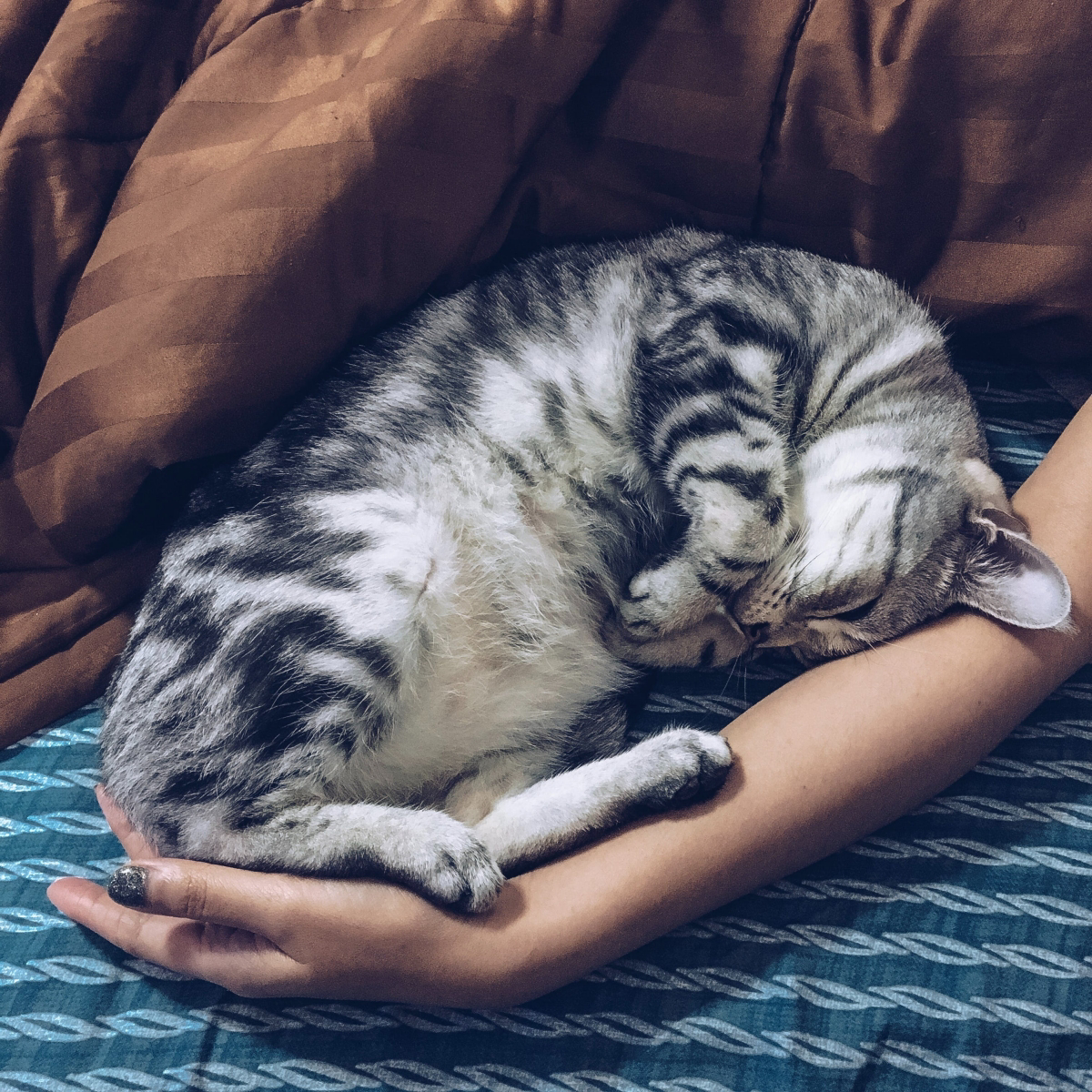
If your cat’s nighttime activity is disturbing your sleep, consider creating a luxurious alternative right next to you. A heated bed like the K&H Pet Products Thermo-Kitty Mat placed on a nightstand or at the foot of your bed can provide the warmth they seek, while a Feliway Classic diffuser plugged in nearby can create a sense of calm, encouraging them to stay in their own designated cozy spot.
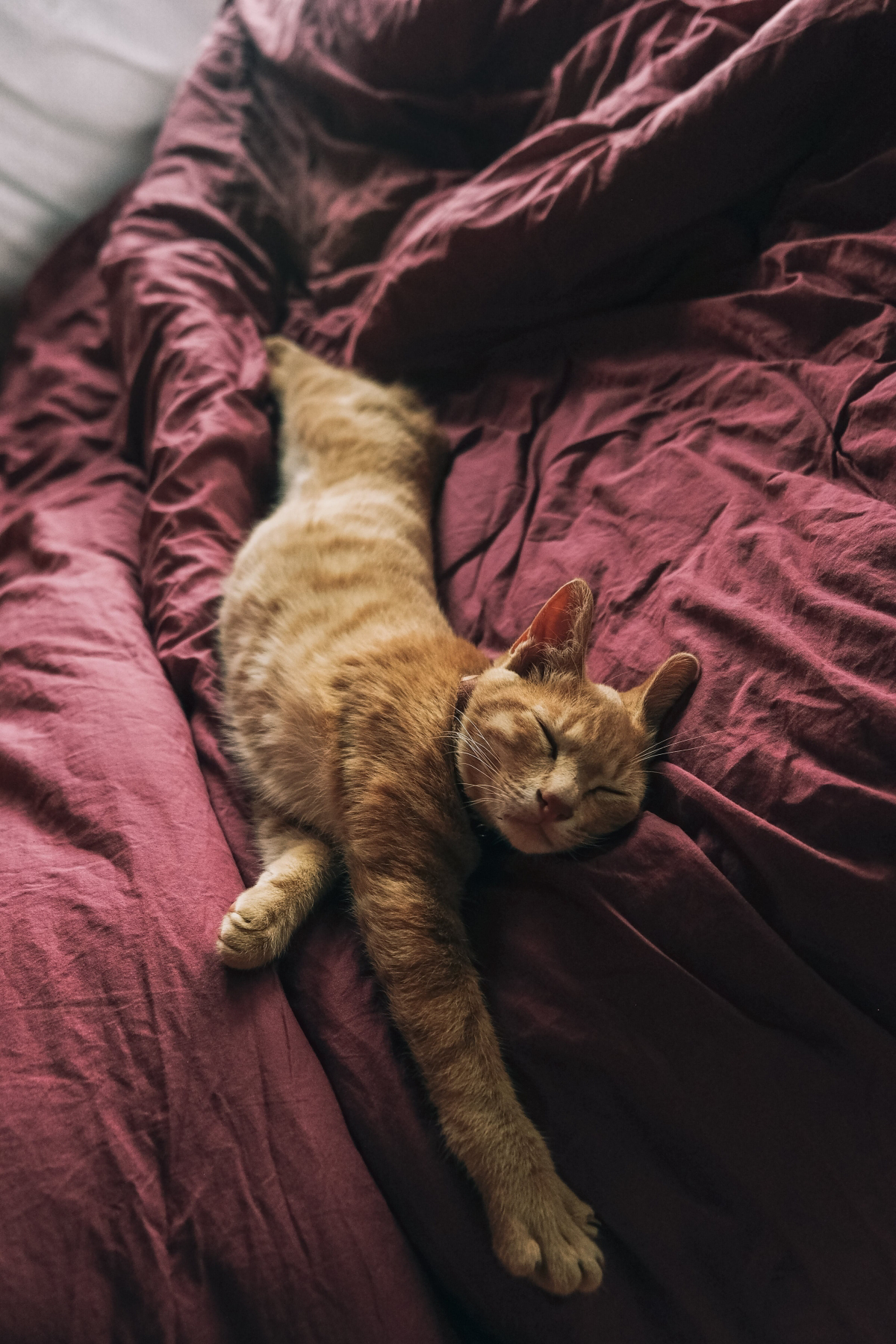
Cats are polyphasic sleepers, meaning they sleep for multiple short periods throughout the day and night, rather than one long block like humans.
This explains those moments of sudden alertness or the 3 a.m. ‘zoomies’. Their sleep-wake cycle is naturally different from ours, a remnant of their crepuscular (dawn and dusk) hunting instincts.
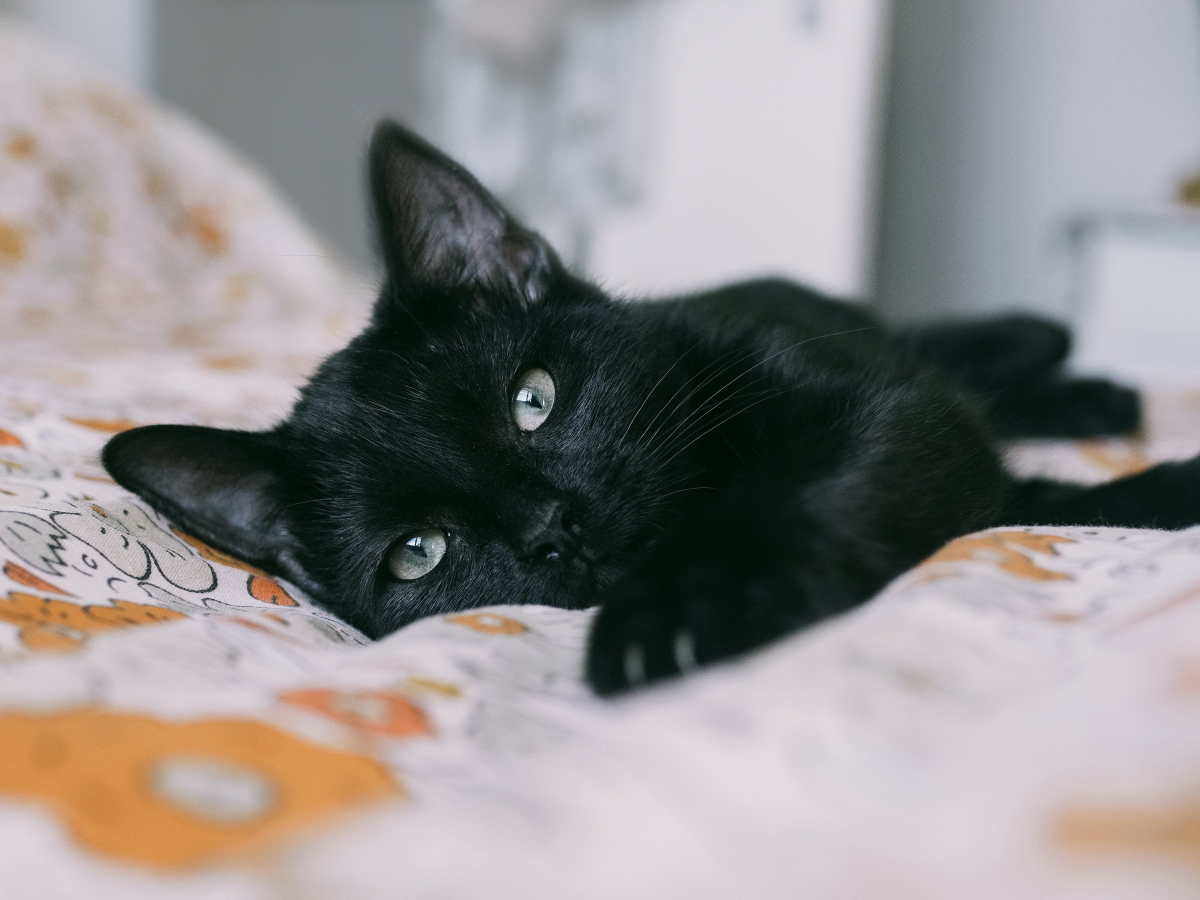
Cat on the bed: Offers maximum bonding and warmth but can lead to sleep disruption.
Cat in a floor-level bed: Gives you both space but may not satisfy your cat’s need for elevated security and closeness.
A happy medium can be a cat tree with a top-level perch or a dedicated cat bed on a sturdy bench at the foot of your own bed. They get the height and proximity, you get the legroom.
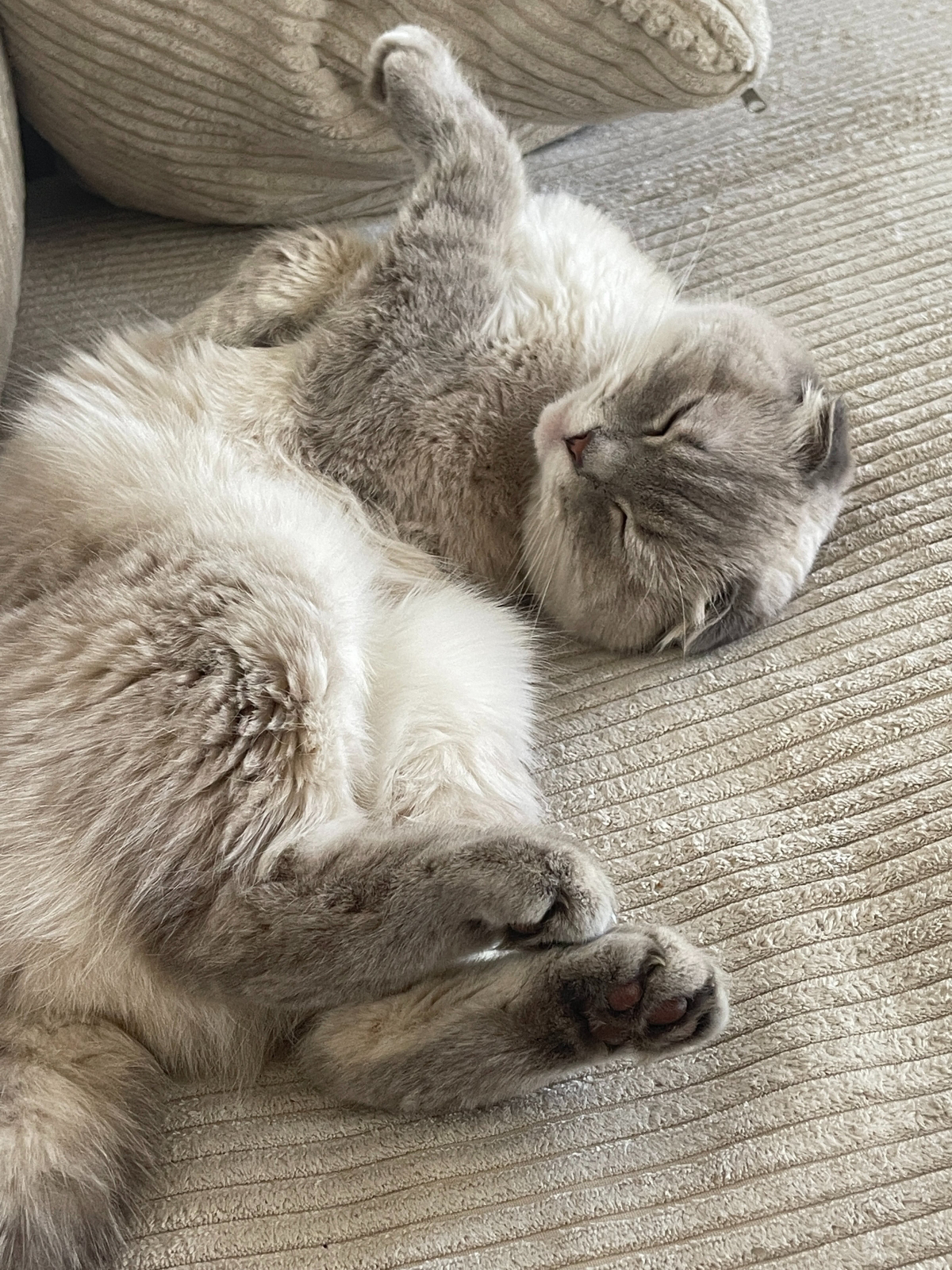

Have you noticed your senior cat has become a more dedicated bedfellow? As cats age, their ability to regulate body temperature can decline, making them seek out warmth more aggressively. Joint stiffness can also make your soft mattress more appealing than other surfaces. This increased desire for closeness is a practical need mixed with a deep-seated desire for security in their golden years.

- They feel the vibration of your heartbeat.
- They absorb your body heat efficiently.
- They are reassured by the rhythm of your breathing.
The secret to why the chest is a prime spot? It’s a sensory trifecta of security.
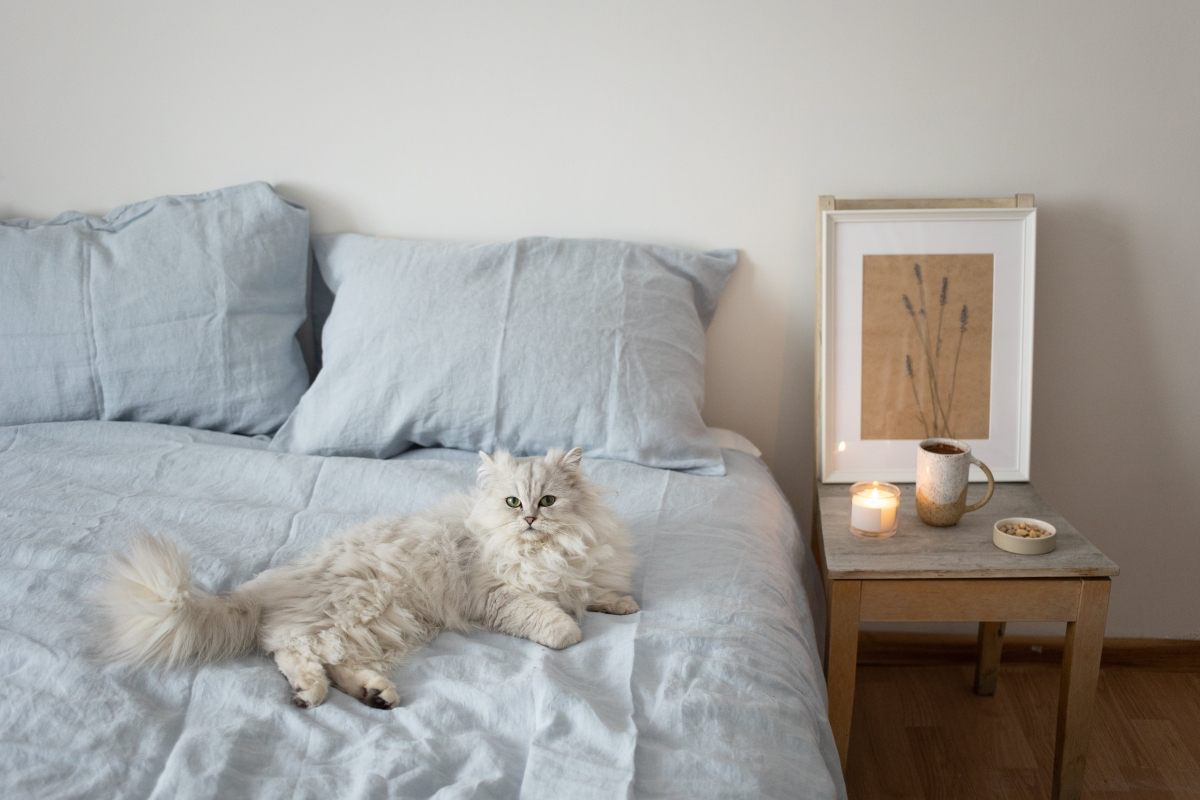
Sometimes a new cat in the house is hesitant to share the bed. Don’t force it. Instead, create an invitation. Leave an old, unwashed sweatshirt of yours on the bed during the day. This allows them to investigate your scent on their own terms and begin associating the bed with your safe, comforting presence.
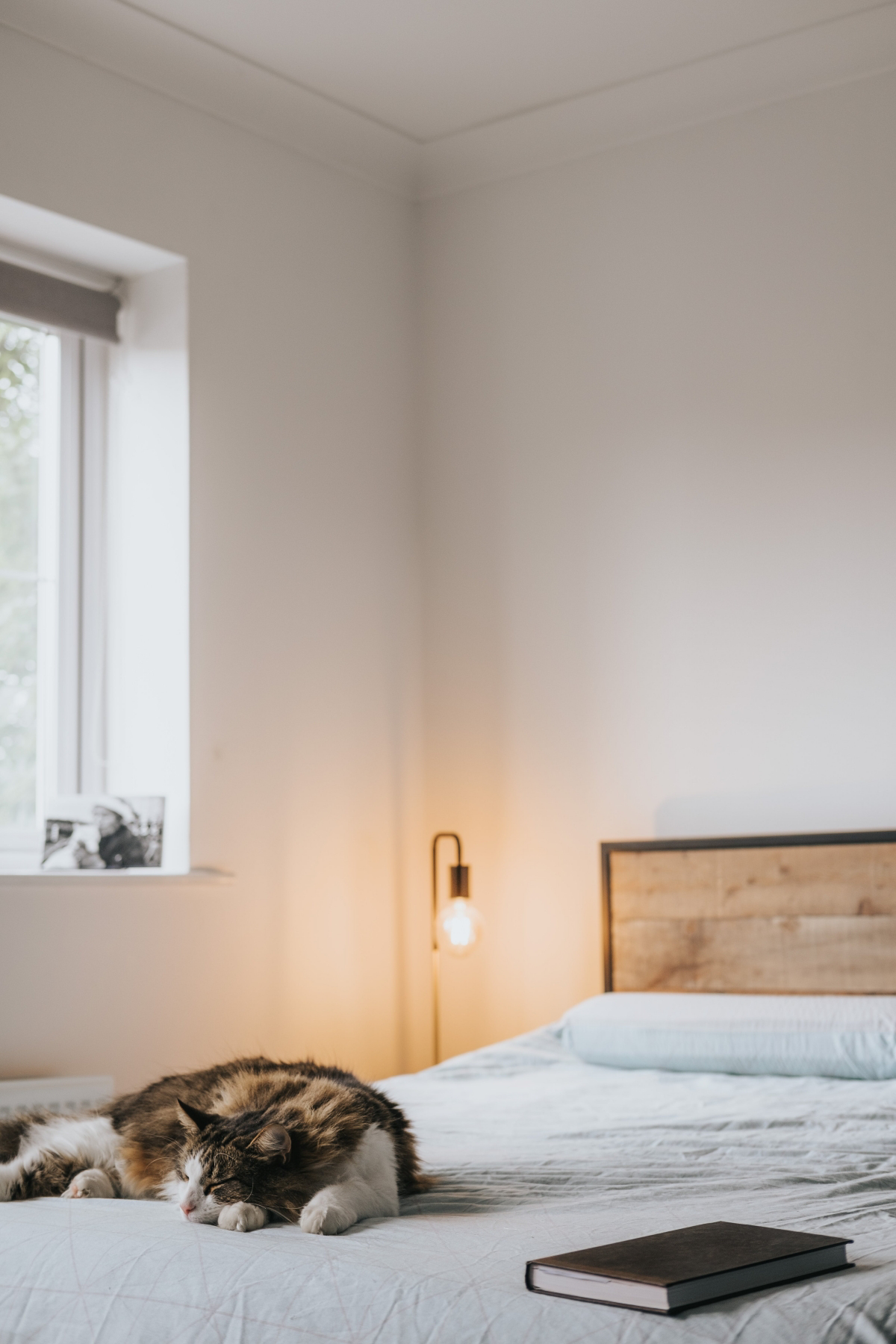
What if I suddenly need my cat to stop sleeping with me?
A sudden eviction can cause stress and anxiety. The key is gradual redirection. Start by placing a new, ultra-comfy cat bed (perhaps one with self-warming material like those from Best Friends by Sheri) right next to your own. Use treats and praise to entice them to their new spot. Over a few weeks, gradually move the bed to its new, permanent location in the room. Patience is essential.
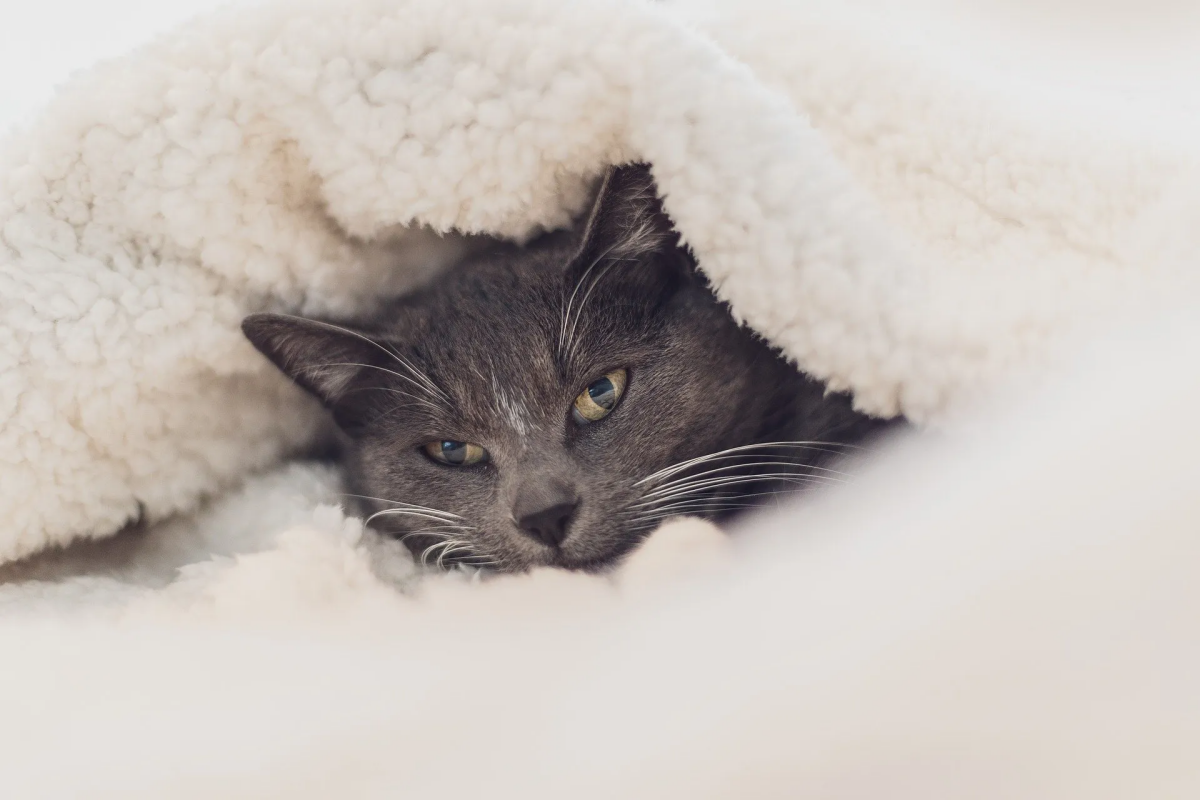
Pay attention to the hygiene of co-sleeping. While generally safe for healthy individuals, it’s wise to maintain a strict cleaning routine. Use a mattress protector and wash your bedding frequently in hot water. Ensure your cat is up-to-date on flea, tick, and worming treatments to keep your shared sanctuary both cozy and clean.
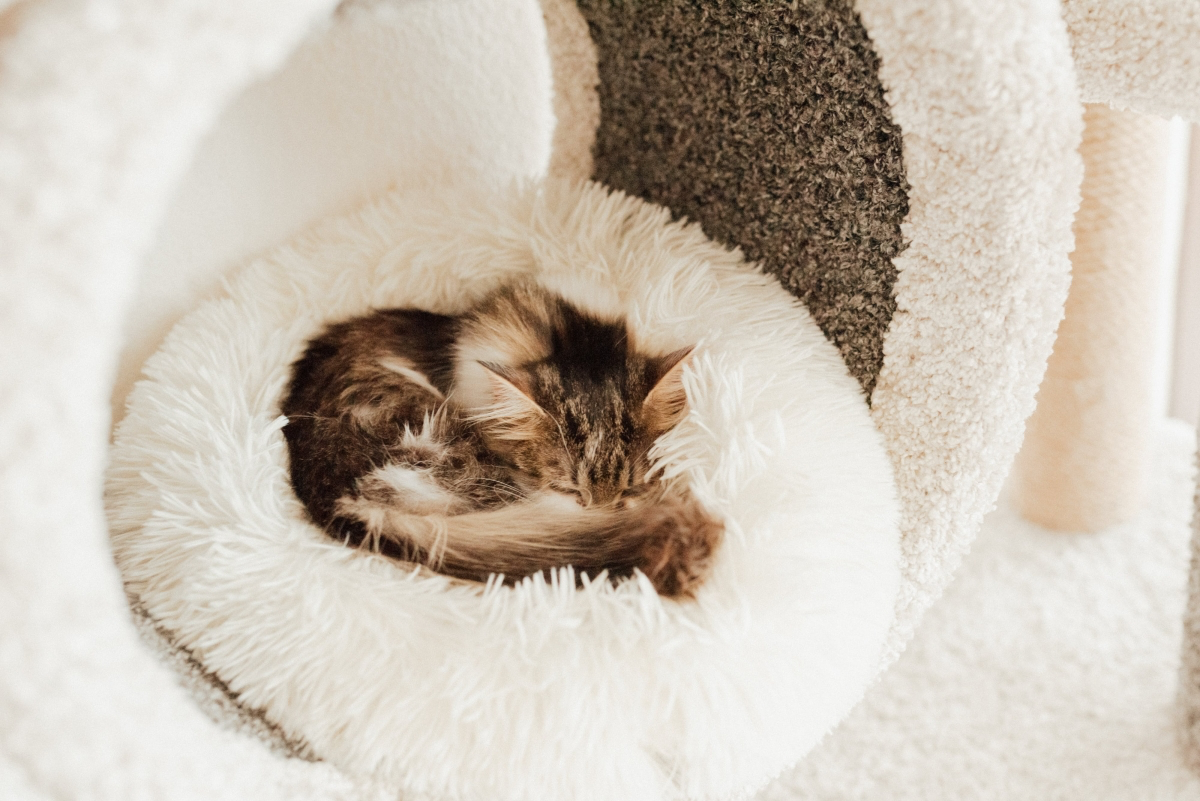
The Allogrooming Gesture: When your cat licks or gently nibbles your hair or skin before sleeping, it’s not just a quirky habit. This is ‘allogrooming’—a behavior bonded cats use to share a group scent and reinforce social ties. By grooming you, they are unequivocally claiming you as family.

The trust involved in co-sleeping isn’t just about predators. Your cat is also trusting you not to roll over and crush them. Their willingness to sleep soundly beside a creature so much larger than them is a testament to the safety and predictability you’ve established in your relationship. They’ve learned your sleep movements and have deemed them non-threatening.

Is your bed the only soft surface in the house? Sometimes, the reason is less emotional and more practical. If your home has mostly hardwood or tile floors, your bed might be the only comfortable option. Adding a few plush rugs or a dedicated, high-quality pet bed in a sunny spot can give them appealing alternatives for their many daily naps.
That gentle ‘thud’ on the bed isn’t just an arrival; it’s the start of a ritual.
- The initial survey of the territory (your bed).
- The circling and selecting of the perfect spot.
- The pre-sleep kneading to ‘soften’ the area and deposit scent.
- The final, contented curl-up.
Observing this nightly routine is a window into their instinctual world.










